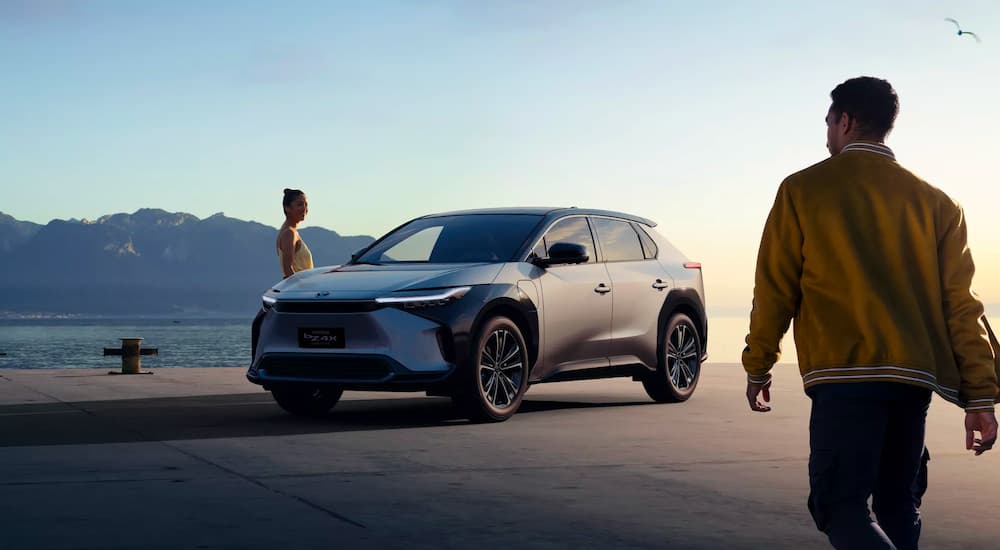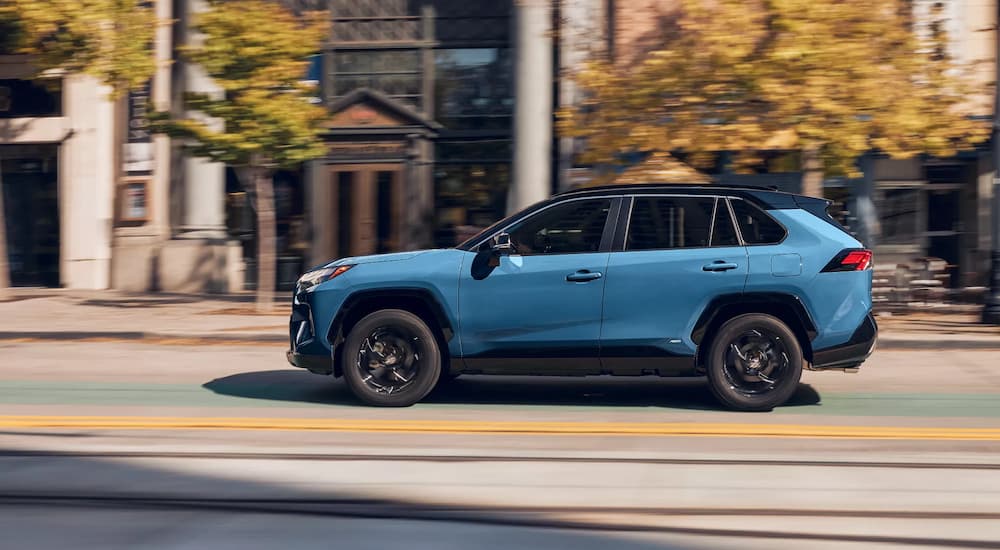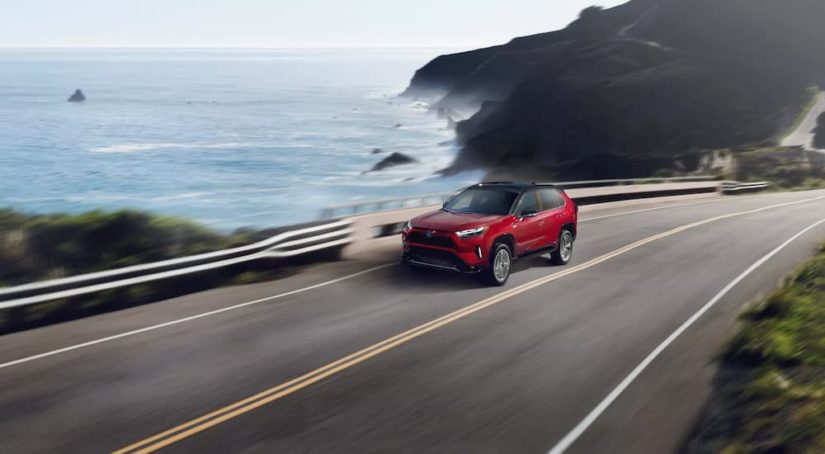Gas prices reached all-time highs this year, sparking a surge of interest in EVs and hybrids. Drivers were lured to dealerships by the idea of saving money at the pump. But while EVs and hybrids certainly cost less to drive, they tend to come with much higher price tags than traditional gasoline vehicles. Almost invariably, the more efficient the vehicle is, the more it will cost you upfront, with full EVs averaging over $10,000 more than similar gasoline cars. So before you sell your car and buy an alternative fuel vehicle, let’s take a moment to consider whether saving money at the pump will actually save you money overall.
Sorting Through Your Options
Today, the market for alternative-fuel vehicles has exploded, and buyers are no longer limited to hyper-efficient budget-oriented vehicles like the Toyota Prius. Today, hybrids can include everything from luxury SUVs like the BMW X5 to full-size pickup trucks like the Ford F-150. Even hybrid supercars are available, with exclusive brands like Ferrari and Lamborghini now offering electrified models. Hybrids have also diversified in terms of technology. While traditional Prius-like hybrids still dominate the market, drivers now have access to mild hybrids and plug-in hybrids (PHEVs).
In order to keep things simple, we will be keeping things focused on four very similar models from the same manufacturer: Toyota’s RAV4, RAV4 Hybrid, RAV4 Prime, and bZ4X. These four models cover the full spectrum of electrification with a gasoline-only vehicle, a traditional hybrid, a plug-in hybrid, and a full EV. These models are also particularly good choices because the compact SUV is the most popular segment in the market, the RAV4 is the best-selling compact SUV available, and Toyota is the undisputed leader in hybrid technology. While the bZ4X is still brand-new and is not as popular as the proven Tesla Model Y or Ford Mustang Mach-E, it is far more comparable to the RAV4 than any other EV model.
- 2022 Toyota RAV4 AWD: $28,375
- 2022 Toyota RAV4 Hybrid AWD: $29,575
- 2022 Toyota RAV4 Prime AWD: $39,800
- 2023 Toyota bZ4X AWD: $44,080
While all four models offer fairly comparable performance (although the RAV4 Prime is a bit of an outlier with its 302 horsepower), their prices differ markedly. There is an almost $16,000 difference between the base RAV4 and the bZ4X, which is fairly standard for an electric vehicle. Lithium-ion batteries are extremely expensive, costing around $135 per kilowatt-hour, accounting for most of the price difference. The question is, can the greater efficiency of a hybrid or EV save enough money at the pump for the driver to break even?

Figuring Out Efficiency
Comparing the efficiency of two gasoline-powered vehicles is fairly straightforward. However, things become more complicated when you factor in EVs and PHEVs. The cost of a gallon of gas may fluctuate wildly over time, but it will be relatively consistent no matter what gas station you go to. However, the cost of a kWh of electricity is another matter entirely. While most EV charging is done at home at residential electricity rates, public charging can either cost several times more at DC fast-charging stations or be completely free at some Level 2 destination chargers. PHEVs throw another wrench in the works as they use both gasoline and electricity at different times.
In order to give EVs and PHEVs the best possible chance and make the calculations simpler, we will assume that they are always charged at residential rates and that PHEVs will always deplete their batteries before burning any gas. We will also assume that EVs and PHEVs start every day fully charged, which is a reasonable assumption given how easy it is to charge them with a standard 120V or 240V household outlet. Because the RAV4 Prime has 42 miles of electric range, which is a bit above average for a PHEV, charging overnight would theoretically allow you to drive 15,330 miles a year on battery power alone, although in the real world, it is likely that you would be burning some gasoline with the occasional burst of quick acceleration or longer trip. Still, it has enough electric range to spend most of its life in EV mode as long as you don’t have a lead foot.
- 2022 Toyota RAV4 AWD: 30 MPG combined
- 2022 Toyota RAV4 Hybrid AWD: 40 MPG combined
- 2022 Toyota RAV4 Prime AWD: 38 MPG combined / 94 MPGe, 42-mile range
- 2023 Toyota bZ4X AWD: 104 MPGe, 228-mile range
As expected, the RAV4 Hybrid is significantly more efficient than the gasoline-only RAV4, and the RAV4 Prime and bZ4X are more efficient still. However, the efficiency of the RAV4 Prime depends on how much you can rely on battery power. Once the battery is exhausted and the vehicle switches to standard hybrid mode, it is actually slightly less efficient than the traditional RAV4 Hybrid. Still, if you spend most of your time within its 42-mile range, the RAV4 Prime is nearly as efficient as the bZ4X.
It should be noted that with the 228-mile range of the bZ4X and charging overnight, you could theoretically drive 83,220 miles per year without ever needing to use a public charging station. In reality, it is highly unlikely that you would drive exactly 228 miles round trip every day, but it demonstrates that the average driver will almost never need to spend time at public charging stations outside of the occasional long road trip.
Where Is the Break Even Point?
While it is always a good thing to spend less money at the pump, and being able to recharge your EV or PHEV at home is an incredible convenience that means taking less time out of your day to visit gas stations, the real goal of most shoppers is to reduce their total transportation costs. Reducing your gas bill by a couple hundred dollars a year doesn’t help if you increased your car payments by just as much. Considering that the average American drives nearly 15,000 miles a year, and taking an average of $4.75 per gallon and 17¢ per kWh, we get the following annual energy bill for each of the four models.
- 2022 Toyota RAV4 AWD: $2,375
- 2022 Toyota RAV4 Hybrid AWD: $1,780
- 2022 Toyota RAV4 Prime AWD: $1,093
- 2023 Toyota bZ4X AWD: $814
Overall, the potential fuel savings from buying a hybrid or EV is pretty staggering. The simple RAV4 Hybrid will save the average driver roughly $600 a year compared to the standard RAV4, and the electric bZ4X will likely cut your fuel bill by two-thirds! The RAV4 Prime also offers substantial savings for drivers who can spend most of their time in EV mode, but even if you spend most of your time using battery power, the PHEV will still provide the same substantial savings as the traditional hybrid.
But while those are some big numbers, electrified models are also considerably more expensive. So will the average driver actually see any savings by switching to a hybrid or electric vehicle?
- 2022 Toyota RAV4 Hybrid AWD: 6 months to break even
- 2022 Toyota RAV4 Prime AWD: 125 months to break even
- 2023 Toyota bZ4X AWD: 232 months to break even
While the answer might be disappointing to drivers suffering from high gas prices, buying an EV or PHEV won’t save your finances. Even if you travel 30,000 miles a year––more than twice what the average driver covers––the all-electric bZ4X won’t start saving you money until after you have owned it for a full decade! However, traditional hybrid models like the RAV4 Hybrid are another story entirely. With the current high gas prices, the average driver will start seeing real savings in a matter of months and won’t even need to change their driving routine or worry about charging stations.

EVs Might Save the Planet, but They Won’t Save Your Wallet
These three compact SUVs are not the most efficient models in their segments, but they are a good snapshot of the type of vehicle that Americans prefer to drive. If you are looking to save money on transportation, a hybrid might be a good idea, but an EV or PHEV probably isn’t. Overall, the best way to save on gas is to simply buy a smaller car. If you can downsize from a large SUV to a compact sedan, especially a hybrid compact sedan like the good old Toyota Prius, then you will see much more immediate savings than investing in an electrified vehicle––particularly since small cars tend to be considerably cheaper to buy as well. With the current high prices of used cars, you might even make enough profit selling your old vehicle to cover several years’ worth of fuel!



